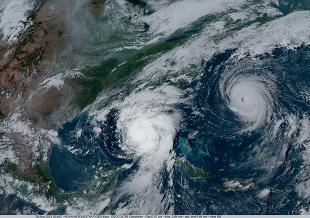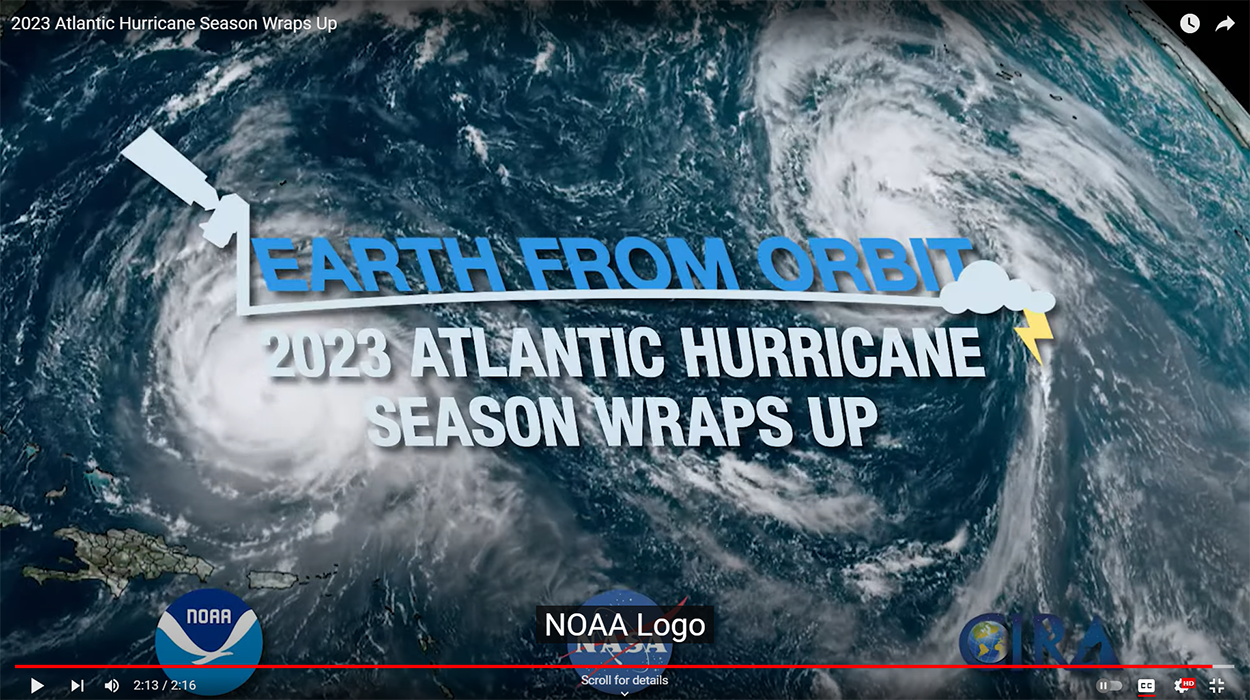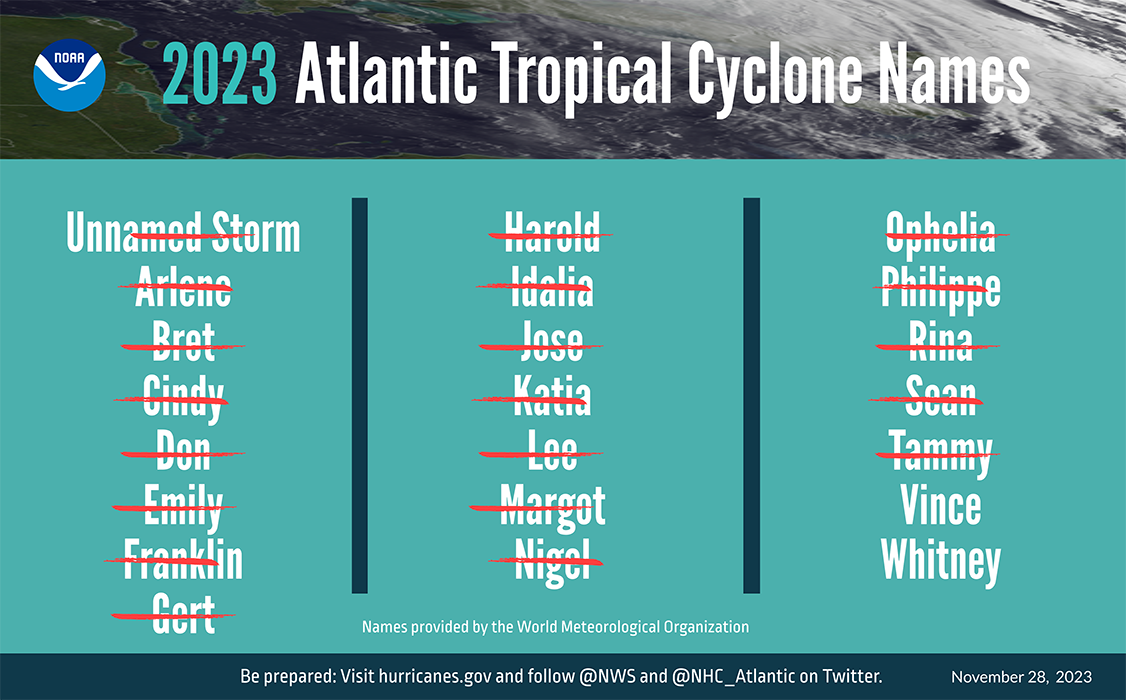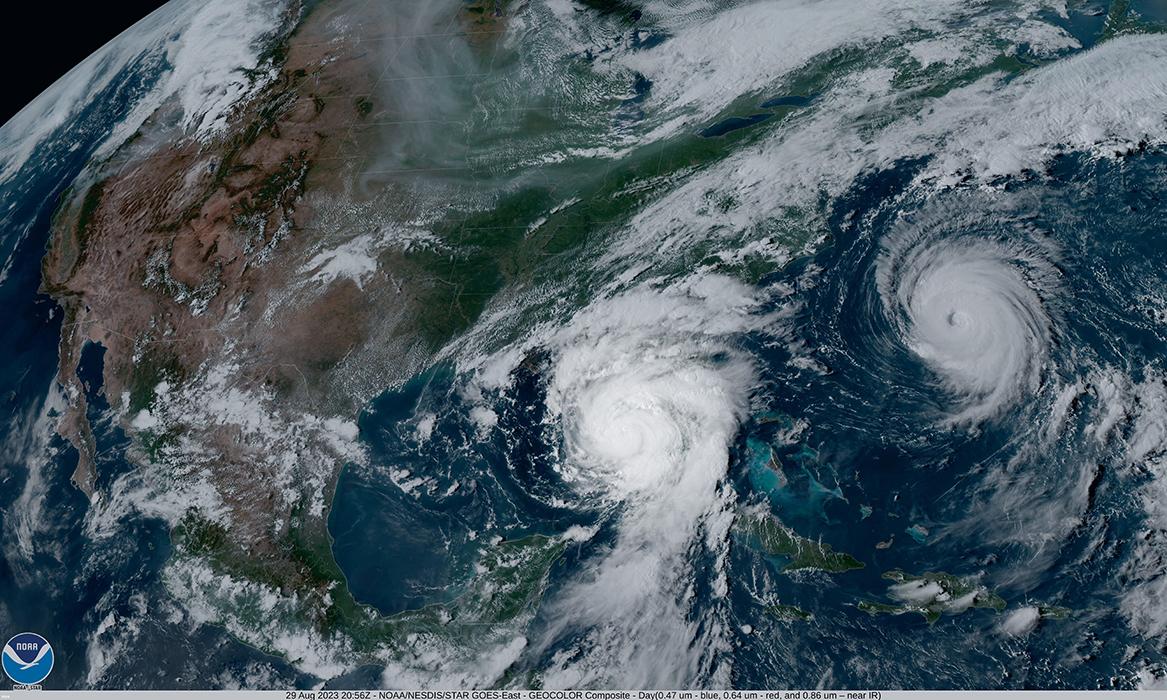News | Stories
2023 Hurricane Season Recap
 NOAA
NOAA
It might surprise you to learn that the 2023 Atlantic hurricane season was one of the busiest on record, ranking fourth for most-named storms in a year since 1950. Did the headlines of destruction somehow escape you? Actually, most of those 20 named storms, including seven hurricanes, didn’t even make landfall and instead veered back into the Atlantic Ocean.
See More Hurricane Season Insights & Advice
In fact, only three Atlantic storms made landfall in the US and Canada: Hurricane Idalia, Hurricane Lee and Tropical Storm Ophelia.
Hurricane Idalia
Briefly a Category 4 storm before making landfall as a Category 3 in the Big Bend region of northern Florida in late August, Hurricane Idalia caused significant damage across parts of the southeastern US. It marked the most powerful hurricane to hit the region since 1896, and winds and floodwaters damaged many homes, businesses and infrastructure. The storm spawned an outbreak of tornadoes and four people died in in storm-related incidents. States impacted beyond Florida included Georgia, South Carolina and North Carolina. Insurance losses from the storm were estimated between $2.2 and $5 billion.
Hurricane Lee
In early September Hurricane Lee swept up along the East Coast, impacting many US States. Though it ultimately made landfall in Canada (Nova Scotia, New Brunswick, Prince Edward Island and Newfoundland and Labrador), Lee caused dangerous rip currents and strong winds along its path. States impacted included New York, Massachusetts, Rhode Island, New Hampshire and Maine. Three storm-related fatalities were confirmed.
Tropical Storm Ophelia
Making landfall near Emerald Isle, North Carolina, on September 22, Tropical Storm Ophelia brought 70 mph winds before quickly weakening as it moved inland. Ahead of its arrival, states of emergency were declared in Virgina, North Carolina and Maryland. The wind gusts brought downed power lines and trees and left more than 70,000 utility customers without power. The remnants of the storm then pummeled New York City, causing flash flooding within the tri-state area.
A notable storm outside the Atlantic is Hurricane Otis, which made landfall near Acapulco as a Category 5 storm. It shattered records to become the strongest landfalling Pacific hurricane to date. It is also particularly noteworthy for undergoing explosive intensification within a 24-hour period after initially being forecast as a weak tropical storm that would remain offshore. The storm caused at least 50 deaths and upwards of 10 billion in damages.
El Nino’s Role and Looking Ahead to 2024
While El Nino typically brings on a quieter hurricane season, warm waters cancelled out the effect: “The Atlantic basin produced the most named storms of any El Nino−influenced year in the modern record,” said Matthew Rosencrans, lead hurricane forecaster at NOAA’s Climate Prediction Center — a division of NOAA’s National Weather Service. “The record-warm ocean temperatures in the Atlantic provided a strong counterbalance to the traditional El Nino impacts.”

Experts believe that El Nino will likely go away at some point during the 2024 hurricane season, and it’s difficult to predict what the water temperatures will be like, but global trends point to rising temperatures. These two factors combined create a high potential for another above-normal Atlantic hurricane season.
Contact Us
Don't wait until a storm is predicted to strike your area. Contact Thornton Tomasetti to help you develop an emergency preparedness plan. In the event that a hurricane does damage your property, we have performed rapid assessments for a variety of clients on a range of building types across the coasts and we can help you get back to functionality as quickly as possible.


